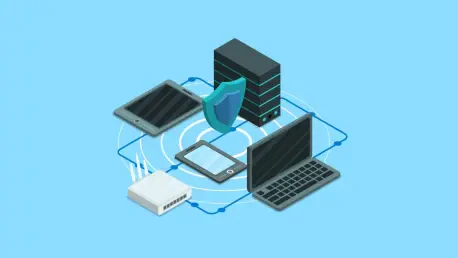

In a field where technology and insurance converge to address increasing cybersecurity risks, Google Cloud's recent expansion of the Risk Protection Program (RPP) into the EMEA region stands as a robust response. This move, affecting more than 30 markets across Europe, the Middle East, and Africa,

In recent years, the tech industry has witnessed an increasing demand for solutions that bridge artificial intelligence capabilities with enhanced privacy measures. Etron Technology has consistently been at the forefront of this advancement, underscoring its pivotal role in reshaping the landscape

In an era marked by rapid technological advancement, Helium is making significant waves in the telecommunications industry by utilizing a decentralized 5G network. The company initially gained recognition in 2019 for establishing a decentralized network tailored for the Internet of Things (IoT).

In today's fast-paced technological environment, data centers are the beating heart of digital activity, responsible for handling the ever-expanding volumes summoned by AI developments, cloud computing, and complex network services. As these demands intensify, the traditional frameworks guiding

In the fast-evolving world of cloud security, the need for robust, reliable, and secure systems has never been more pressing. With increasing reliance on cloud environments for data storage and application deployment, vulnerabilities have become a significant concern. As such, any advancement in

In an era where network security and management are pivotal to organizational success, Gamma's expanded partnership with Cisco stands as a significant innovation. As companies continue to face the complexities of securing and managing multi-vendor environments, Gamma and Cisco have joined forces to

SonicWall has made a significant leap in the cybersecurity industry by unveiling an innovative suite of products and services designed specifically for managed service providers (MSPs). This strategic initiative aims to provide MSPs with tools that not only ensure end-to-end customer protection but

The rapid advancement of Artificial Intelligence (AI) systems is spurring an urgent need for novel solutions to enhance communication and integration among various components. As AI architectures become increasingly complex, the challenge lies not only in elevating their capabilities but also in

In an era where digital transformation is reshaping industries at an unprecedented pace, the revolution of cloud computing stands as a central pillar of this evolution. The ability to access computing resources remotely, including servers, databases, networking, and software over the Internet, has

Langflow, an AI builder framework, has become an integral tool in the development landscape, yet recent discoveries have unveiled a critical vulnerability known as CVE-2025-3248. With a significant CVSS score of 9.8, this flaw is actively exploited, posing severe risks to numerous systems. This
ITCurated uses cookies to personalize your experience on our website. By continuing to use this site, you agree to our Cookie Policy